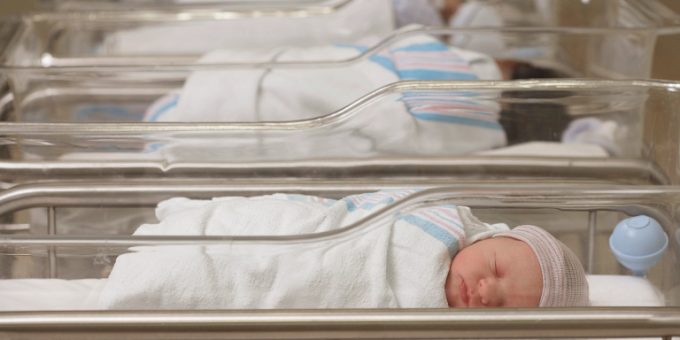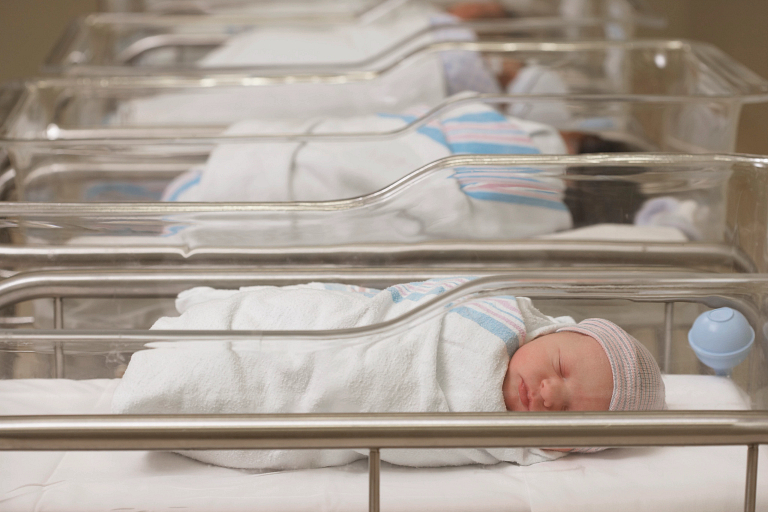
INDIANAPOLIS and BLOOMINGTON – A study by researchers from the Indiana University School of Medicine in Indianapolis and the Gill Center for Biomolecular Science at IU Bloomington found that in-utero exposure to methadone in mice could negatively affect developmental milestones related to the proper functioning of the brain’s sensory and motor systems.
The findings could one day lead to new treatment options that reduce long-term damage to human babies from in-utero opioid exposure.

“The opioid epidemic has led to a growing number of babies being born to mothers who used opioids throughout pregnancy, but little is known of the biological mechanisms that underlie prenatal, opioid-exposure-induced, long-term negative consequences,” said study lead Brady Atwood, assistant professor of pharmacology and toxicology at the IU School of Medicine. “Our findings revealed a disruption in physical, behavioral, and neuronal development in prenatal methadone-exposed mice, which persisted beyond the immediate neonatal period. This supports clinical studies that suggest babies born with opioid exposure are at higher risk for adverse developmental outcomes.”

The study, published March 16 in eLife journal, is part of IU’s Responding to the Addictions Crisis Grand Challenge.
Researchers used mice to model the case of a woman who is dependent on the prescription opioid painkiller oxycodone, enters into a methadone maintenance therapy program and subsequently becomes pregnant, maintaining methadone use throughout pregnancy. They then developed a model that resulted in mouse behaviors that are reminiscent of human neonatal opioid withdrawal syndrome, such as hyperarousal, crying, hyperthermia and sudden twitching.
Atwood and his team investigated the effects of prenatal methadone exposure on physical development, sensory and motor behaviors, and properties of brain cells in the motor cortex. They used a multidisciplinary approach of physical, biochemical and behavioral assessments.
The research found that methadone accumulates in the fetal brain and in the placenta, essentially bathing the brain in the drug and producing developmental delays.
“Our study found that in-utero methadone exposure had a negative impact on sensorimotor development in mice, producing delays and dysfunctional neurocircuit function,” Atwood said. “We also found that prenatal opioid exposure slowed physical development, resulting in smaller offspring and smaller bone volumes.”
Pregnant women and their developing fetuses represent a vulnerable population severely affected by the opioid crisis. According to previous research, from 1999 to 2014, the annual prevalence of opioid use disorder in pregnant women at delivery increased 333%. With that, neonatal opioid withdrawal syndrome increased.
“Although methadone may be a necessary and effective treatment for maternal opioid use disorder, our findings suggest this treatment during pregnancy may come at the cost of persistent disruptions in offspring development,” Atwood said. “While these findings are not evidence against the use of opioid maintenance therapies in pregnancy, they do show the need for early and preventive clinical intervention programs such as neurodevelopmental follow-up programs to support the healthy development of infants exposed to opioids in utero.”
Additional authors on the study are Matthew R. Allen, AJ Baucum, Eric A. Engleman, Yong Gao, Gregory G. Grecco, David L. Haggerty, Hunter Hoffman, Simon N. Katner, Jiuen Kim, Andrea R. Masters, Corinne E. Metzger, Briana E. Mork, Cameron W. Morris, Erin A. Newell, Kaitlin C. Reeves, Patrick L. Sheets, Yu-Chien Wu and Bryan K. Yamamoto, all of the IU School of Medicine, as well as Jui-Yen Huang and Hui-Chen Lu of the Gill Center for Biomolecular Science and the Department of Psychological and Brain Sciences in the College of Arts and Sciences at IU Bloomington. Baucum and Morris are also affiliated with the Department of Biology in the School of Science at IUPUI.
IU Research
Indiana University’s world-class researchers have driven innovation and creative initiatives that matter for 200 years. From curing testicular cancer to collaborating with NASA to search for life on Mars, IU has earned its reputation as a world-class research institution. Supported by $854 million last year from our partners, IU researchers are building collaborations and uncovering new solutions that improve lives in Indiana and around the globe.
IU School of Medicine
IU School of Medicine is the largest medical school in the U.S. and is annually ranked among the top medical schools in the nation by U.S. News & World Report. The school offers high-quality medical education, access to leading medical research and rich campus life in nine Indiana cities, including rural and urban locations consistently recognized for livability.
Information from News at IU.



